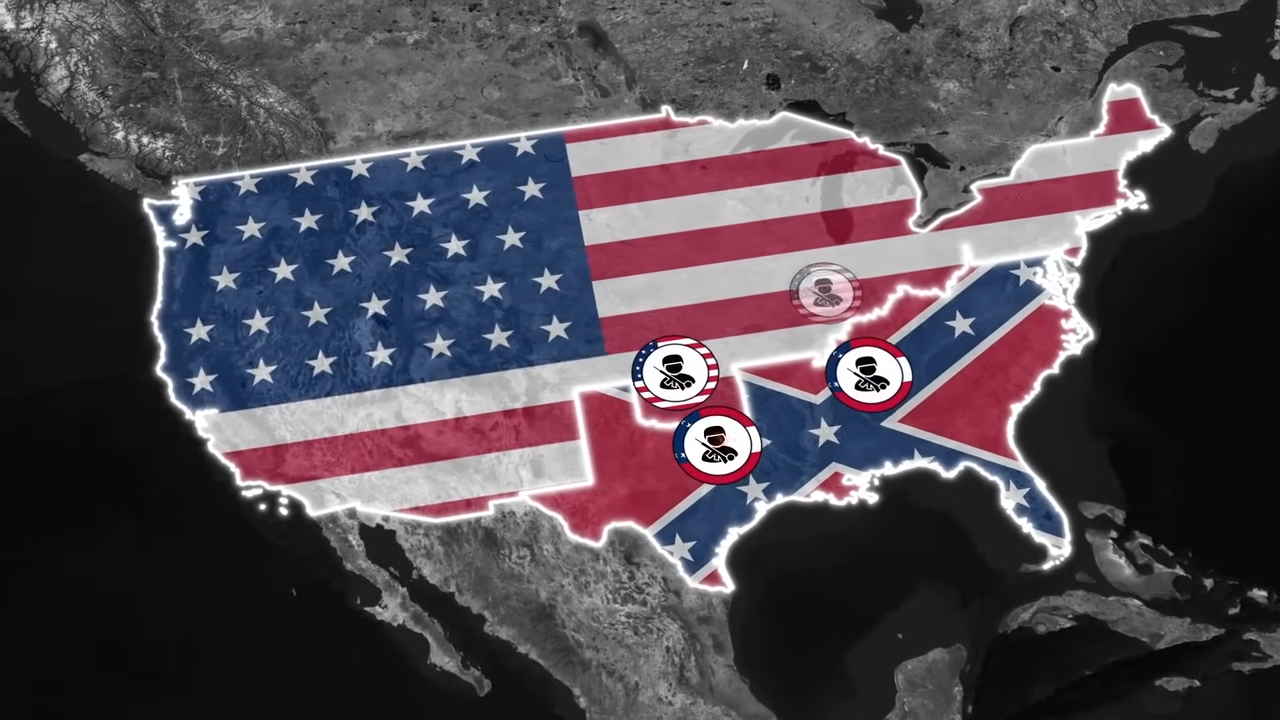The Civil War, the deadliest conflict in American history, has long been shrouded in uncertainty regarding its exact death toll, particularly at the state level, due to incomplete records.
However, a recent study by Jeffrey L. Jensen shed new light on this issue, leveraging newly released full-count census data and a sample of linked records across multiple censuses.
These studies present the most precise national estimate of Civil War deaths so far—698,000.
This figure is notably higher than the traditional estimate of 618,000 but lower than a more recent estimate of 750,000 based on a 1% census sample.
By applying a novel migration-adjusted census comparison method, Jensen’s work also highlights the significantly greater toll the war exacted on the Confederate states compared to the Union.
Table of Contents
ToggleNew Census Data and Improved Methods Reveal Higher Death Toll
New Civil War research with IPUMS full-count data: https://t.co/hNkdChdHw9
— J. David Hacker (@jdavidhacker612) November 19, 2024
The Civil War (1861–1865) remains the deadliest conflict in American history, but accurate mortality estimates have been elusive due to incomplete Confederate records and significant migration during the era.
For over a century, the widely accepted death toll was 618,222, though this was recognized as a significant undercount.
Recent research, notably J. David Hacker’s 2011 census-based sex-differential analysis, revised the estimate to over 750,000 deaths.
However, Hacker’s approach faced two key limitations: incomplete census data and the inability to accurately account for state-level mortality due to substantial interstate migration.
Key Findings from New Research
Step
Description
Estimate Peacetime Death Rates
Calculate expected death rates during 1850–1860 and 1870–1880 peacetime periods.
Calculate Excess Mortality
Subtract expected peacetime mortality from observed wartime mortality (1860–1870).
Adjust for Migration
Account for intercensal migration by subtracting excess outmigration rates from excess mortality.
Determine State-Level Death Tolls
Multiply migration-adjusted rates by 1860 population figures for each state and sum across cohorts.
A More Accurate Count from Full Census Records
Recent analysis leveraging full-count census data provides the most precise estimate of Civil War deaths to date, refining earlier methods and addressing longstanding gaps in historical records.
Using a sex-differential method with newly available data, researchers have revised the national death toll to approximately 698,000 deaths, a significant adjustment compared to earlier estimates.
Aspect
1% Sample Estimate
Full Count Census Estimate
Key Insights
Excess Deaths Among NBWM
538,842
496,332
Full count reduces estimated deaths by ~42,500, improving precision.
Bounding Interval for NBWM Excess Deaths
(450,561–627,124)
(462,273–530,391)
Full count provides a tighter interval, reducing uncertainty.
Total Civil War Deaths
751,562
698,000
Revised total is 7.2% lower, reflecting more accurate data.
Bounding Interval for Total Deaths
(632,115–871,009)
(647,439–748,561)
Full count reduces the upper limit by 122,000 deaths.
Adjustment for Census Undercount
Included
Included
Both estimates account for a recognized 6% undercount in the 1860 census.
Foreign-Born White Male Mortality
Included
Included
Assumes the same excess mortality rate as NBWM in both estimates.
Deaths of Union Black Soldiers
36,000
36,000
Remains consistent across estimates.
Comparison with Historical Figures
Higher by ~133,000 (21.5%)
Higher by ~80,000 (13%)
Confirms historical undercount of 618,000 but adjusts inflated 1% sample figure.
State-Level Civil War Mortality – Excess Death Rates by Region

The New York Times stated that the states in the Old North had much lower mortality rates, with most below 6%. Rhode Island even showed a negative rate (-0.62%), likely due to migration or improved wartime care. Illinois had the highest rate in the region at 9.97%, still far below most Southern states, reflecting the Union’s logistical and medical advantages.
The Border States—Missouri, Kentucky, Maryland, Delaware, and West Virginia—had moderate rates, ranging from 2.29% in Missouri to 8.14% in West Virginia. These rates reflect the localized fighting and population displacement that affected the region.
Southern Death Rates Far Higher Than the North

One of the most striking findings is the disparity in mortality rates between the Union and Confederate forces.
Southern soldiers faced a mortality rate of 13.1%, significantly higher than the 4.9% mortality rate among Northern soldiers according to the phys.org.
Some states in the South experienced devastating losses—Louisiana, for example, suffered a mortality rate of 19%, the highest recorded in the region.
These findings underscore the uneven toll of the war and its profound impact on the Southern population.
Metric
North
South
Total
Total Death Toll
4.9% mortality
13.1% mortality
698,000 deaths
Excess Deaths (Military-Age Men)
N/A
496,332
Included in total
State Example: Louisiana
N/A
19% mortality
N/A
Methodology
Our research used full-count census data from 1850 to 1940, along with a sample of linked records across multiple censuses, to analyze population changes before and after the Civil War.
We applied a sex-differential method to compare mortality rates between military-age white males and females, estimating wartime “excess mortality.”
To account for migration, we developed a novel migration-adjusted census comparison method, ensuring accurate state-level mortality figures.
Expected peacetime death rates were calculated based on 1850–1860 and 1870–1880 data, and subtracted from observed wartime deaths.
These refined methods produced a more precise national estimate of 698,000 Civil War deaths and revealed significant disparities in regional mortality rates.
References
- Jeffrey L. Jensen, Study on Civil War Mortality Using Full-Count Census Data, Proceedings of the National Academy of Sciences. Link to study
- J. David Hacker, A Census-Based Sex-Differential Analysis of Civil War Deaths, Journal of American History, 2011. Link to study
- The New York Times, Civil War Death Toll: Revisiting the Numbers, November 19, 2024. Read article
- Phys.org, Census Analysis Reveals South’s Higher Mortality in Civil War, November 2024. Read article
- Integrated Public Use Microdata Series (IPUMS), 1850–1940 Full Count Census Data. Visit IPUMS
Related Posts:
- Idaho’s Population Crosses 2 Million, According to New Data
- One Weight Loss Strategy Is Far More Effective Than…
- Average Marriage Age in the US - Latest Trends by…
- US States with the Highest and Lowest Dental Care…
- 10 Lowest IQ States in US 2025 - Full Data,…
- Firearms Now the Leading Cause of Death for US…








